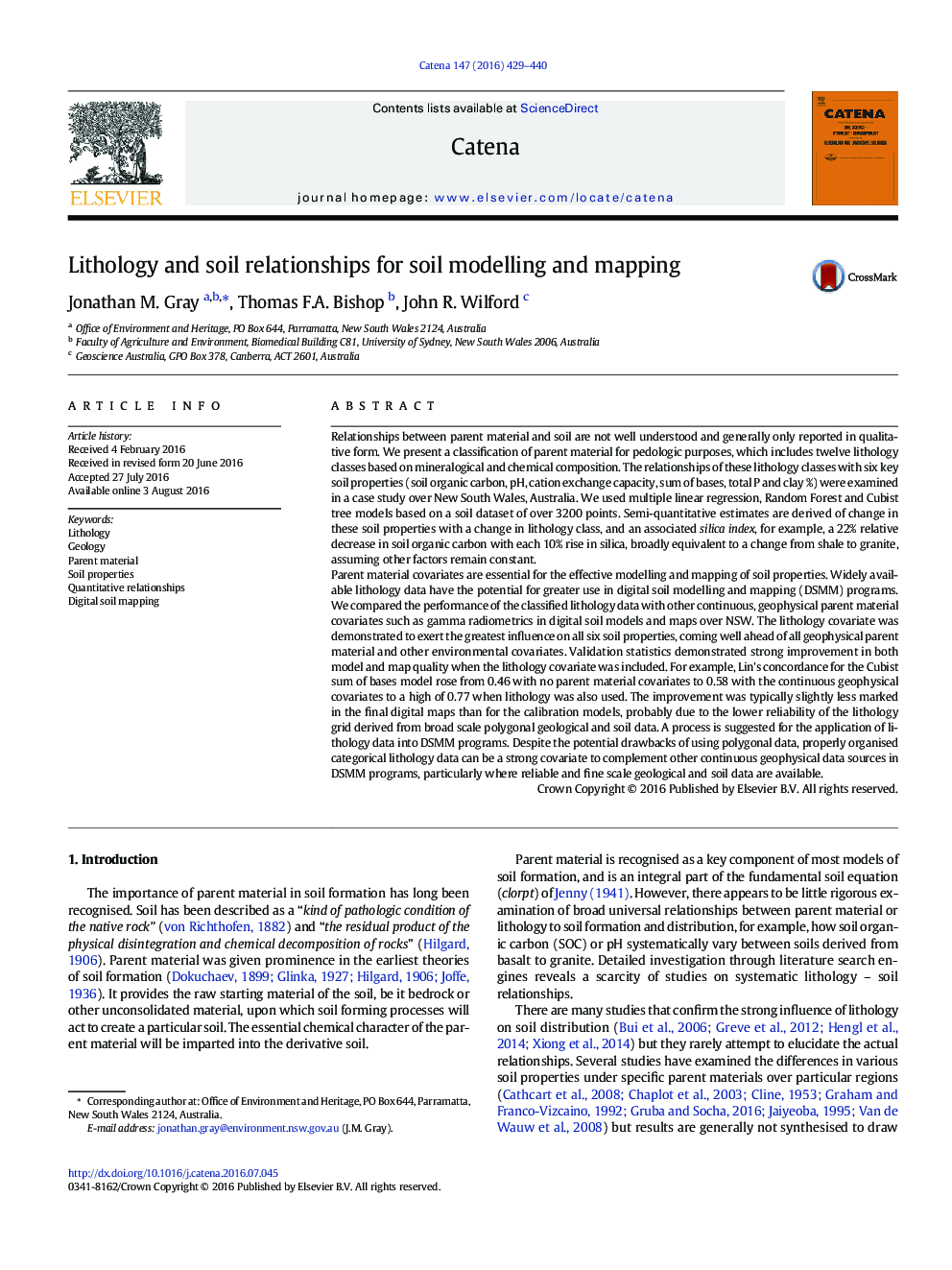| کد مقاله | کد نشریه | سال انتشار | مقاله انگلیسی | نسخه تمام متن |
|---|---|---|---|---|
| 6407747 | 1629205 | 2016 | 12 صفحه PDF | دانلود رایگان |
- Classification of lithology into 12 classes for pedological purposes proposed
- Strong relationships revealed between 6 soil properties and these 12 classes.
- Quantitative changes in soil properties with change in lithology class
- Lithology has highest influence of all covariates for all 6 properties at NSW scale.
- Inclusion of lithology gives strong improvement in digital soil models and maps.
Relationships between parent material and soil are not well understood and generally only reported in qualitative form. We present a classification of parent material for pedologic purposes, which includes twelve lithology classes based on mineralogical and chemical composition. The relationships of these lithology classes with six key soil properties (soil organic carbon, pH, cation exchange capacity, sum of bases, total P and clay %) were examined in a case study over New South Wales, Australia. We used multiple linear regression, Random Forest and Cubist tree models based on a soil dataset of over 3200 points. Semi-quantitative estimates are derived of change in these soil properties with a change in lithology class, and an associated silica index, for example, a 22% relative decrease in soil organic carbon with each 10% rise in silica, broadly equivalent to a change from shale to granite, assuming other factors remain constant.Parent material covariates are essential for the effective modelling and mapping of soil properties. Widely available lithology data have the potential for greater use in digital soil modelling and mapping (DSMM) programs. We compared the performance of the classified lithology data with other continuous, geophysical parent material covariates such as gamma radiometrics in digital soil models and maps over NSW. The lithology covariate was demonstrated to exert the greatest influence on all six soil properties, coming well ahead of all geophysical parent material and other environmental covariates. Validation statistics demonstrated strong improvement in both model and map quality when the lithology covariate was included. For example, Lin's concordance for the Cubist sum of bases model rose from 0.46 with no parent material covariates to 0.58 with the continuous geophysical covariates to a high of 0.77 when lithology was also used. The improvement was typically slightly less marked in the final digital maps than for the calibration models, probably due to the lower reliability of the lithology grid derived from broad scale polygonal geological and soil data. A process is suggested for the application of lithology data into DSMM programs. Despite the potential drawbacks of using polygonal data, properly organised categorical lithology data can be a strong covariate to complement other continuous geophysical data sources in DSMM programs, particularly where reliable and fine scale geological and soil data are available.
Journal: CATENA - Volume 147, December 2016, Pages 429-440
